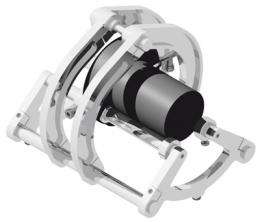From graphite to water

Scientists from the National Physical Laboratory (NPL), in collaboration with researchers in Belgium and Italy, have published research that could help provide a primary standard for dose measurements of carbon ion beam therapy used to treat cancer. The published paper was selected as a Featured Article in the journal Physics in Medicine and Biology.
While conventional radiotherapy uses gamma rays or X-rays to destroy cancer cells, certain types of cancer respond better to treatment using beams of charged ions. Ion beams can be focused on tumours with more precision, saving the surrounding healthy tissue, but currently only four carbon ion beam clinical facilities operate around the world: one in Germany, one in Italy and two in Japan.
One of the obstacles in the way of wider adoption of the therapy is the lack of a primary standard for measurements of the dose. As with any form of radiotherapy, or any type of medicine in general, the dose needs to be calculated accurately. If a patient receives too much, there could be side effects; if a patient receives too little, a few cancer cells could survive and tumours could regrow.
The best way of calculating dose is to measure the heating effect caused by the absorption of radiation in a certain material, using a device called a 'calorimeter'. International protocols state that water should be used as the material, as it has similar absorption properties to the human body. An alternative is to use devices made from solid materials, rather than water. These have many advantages and NPL calorimeters are made from graphite. However, when using graphite calorimeters, a conversion factor needs to be applied so that the measurement results are given in terms of dose absorbed to water and conform to international protocols.
This research carried out experiments and numerical simulations to determine this conversion factor for measurements made using a graphite calorimeter within a carbon ion beam. The final conversion depends on three properties: the depth at which measurements are made in the graphite; the water-to-graphite stopping power ratio, which explains how particles change speed as they ionise other atoms and molecules; and the fluence correction factor, which accounts for different nuclear interactions in water and graphite.
The lead author of the research, Séverine Rossomme, who worked at NPL and the Université catholique de Louvain, Belgium, on the project, said:
"Ion beam therapy is a promising treatment for a variety of cancers but without standards in place it will remain isolated to a few specialist treatment centres around the world and unavailable to a large number of patients. This research is contributing to the development of more reliable measurement standards, which will help make ion beam treatments more reliable and accessible to those that need them."
Read the full paper for free: Conversion from dose-to-graphite to dose-to-water in an 80 MeV/A carbon ion beam
Journal information: Physics in Medicine and Biology
Provided by National Physical Laboratory

















